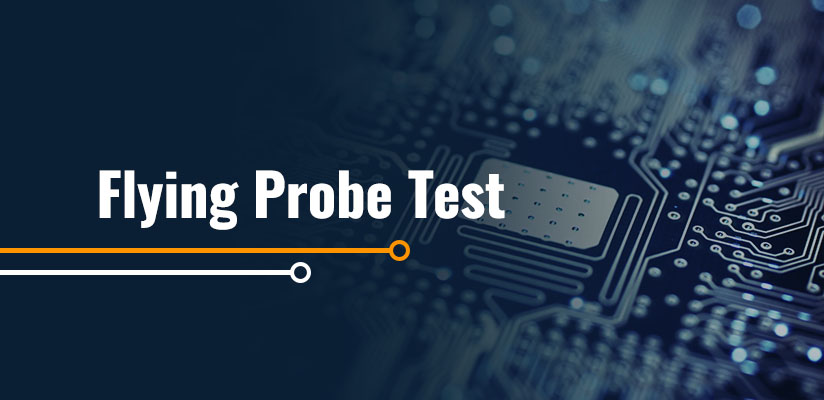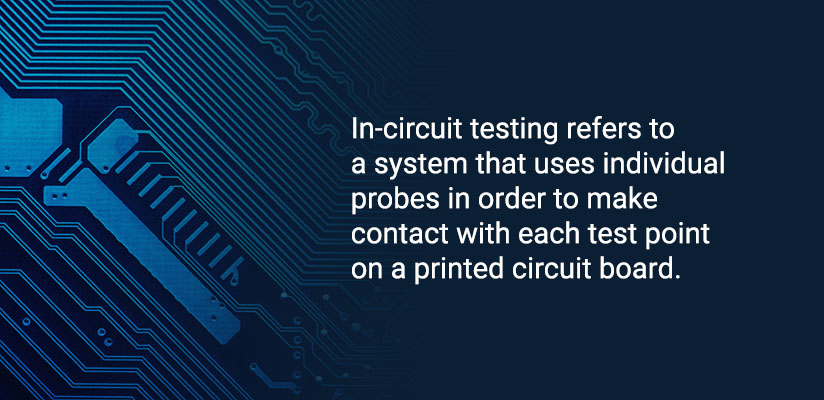Table of Contents
The process for manufacturing printed circuit boards (PCBs) includes a critical testing phase. Each board must undergo testing to ensure manufacturers detect every electrical or circuitry problem before leaving the center. When a PCB passes this testing, it further ensures that it performs reliably. The most common types of testing methods include in-circuit testing (ICT) and flying probe testing (FPT).
FPT is a type of PCB test that is a highly accurate and advantageous option that is gaining even more popularity with the influx of small-sized electronics. Learn more about flying probe testing and its benefits.
What Is Flying Probe Testing?
Flying probe testing refers to the process of testing electronic printed circuit boards in the manufacturing process using probes that “fly” to contact test points simultaneously.
A flying probe tester utilizes one or multiple test probes. These probes can make contact with the PCB both on top and bottom to contact test points. They then move from one place to another on the circuit board to test multiple conductors or components.
They follow the instructions from a program that outlines the specific board that is being tested. These machines use highly precise needles to ensure the PCB is functioning properly and in order. These systems do not require any test fixturing or custom tooling. The probes have very few restrictions regarding board access and are able to test boards with countless nets. This makes flying probe testing a cost-effective choice for boards in their earliest stages of development. FPT is also ideal for low- to mid-volume production.
Many consider flying probe testing to be the most tried and true method for testing printed circuit boards. It conducts non-powered testing for the following:
- Capacitance
- Diode checks
- Inductance
- Opens
- Resistance
- Shorts
This testing method has been around for over 20 years, longer than other methods such as in-circuit testing.
What Is In-Circuit Testing?
In-circuit testing refers to a system that uses individual probes in order to make contact with each test point on a printed circuit board. They check for any assembly defects and for proper functionality.
ICT is better suited for larger volume productions because the assembly of every PCB requires custom test fixtures. These fixtures are often very expensive due to the complicated nature of printed circuit board assembly.
Both in-circuit and flying probe testing are effective systems for testing the performance of PCBs.
How Flying Probe Testing Works
The flying probe testing process is relatively simple and can be split into the following three steps:
Step 1
Before you can begin, you must create a flying probe testing test program. Test programs are usually developed on an offline PC using a test program generating application. These applications typically require the following for assembly:
- Gerbers
- Bill of materials (BOM)
- Electrical computer-aided design (ECAD) files
The BOM should be in EXCEL format, whereas the ECAD files need to be CAD files.
Step 2
Once you have created the test program, it is time to load it onto the conveyer belt inside of the tester. The board travels on the conveyor belt to the testing area where the probes operate. The circuit board may be solo or there may be several boards and testing will depend on the program controls.
Step 3
Probes can then “fly” around the circuit board following the test program. They use test signals to conduct electrical and functional tests on various points of the board. The measurements will be further processed to determine whether a particular circuit portion meets expectations.
If the board fails to meet the expected results or deviates from the set program, the probes will signal that the unit has a defect and, therefore, failed the test.
9 Benefits of Flying Probe Testing
There are many advantages to utilizing FPT. The following are some of the greatest benefits of incorporating flying probe testing in printed circuit board assembly processes, including the following:
- Cost-effective: Flying probe testing is a more cost-effective method than alternatives such as in-circuit testing, especially when conducting testing on smaller-sized volumes.
- Low up-front costs: FPT has lower up-front costs compared to ICT since there are zero expenses associated with test fixtures for flying probe tests.
- Ideal for small- to medium-sized productions: Flying probe testing is well suited for low-volume production because of its low development costs and short development times. Though they are not suitable for larger volume productions, you can still utilize them for samples and prototypes.
- Greater flexibility: The automation of FBT allows for increased flexibility for test changes. The ability to handle changes makes this method beneficial despite having limitations on some more complicated tests.
- Accuracy and precision: Test probes can be positioned with a great level of accuracy and reliability. Flying probes are extremely precise and help to prevent problems with the finished products.
- Shorter lead development time: The run time for a flying probe test can vary depending on its size. In most cases, the test takes approximately five to 15 minutes per board.
- High-tech features: Flying probe testing is starting to include high-tech features like phase difference measurement (PDM) units and micro shorts detection.
- Less custom tooling: FPT does not require custom tooling the way in-circuit testing does, contributing to lower upfront costs and startup times.
- Optimal inspection: You can pair flying probe testing with automated optical inspection (AOI) to confirm that each part is properly formatted and placed on printed circuit boards, thanks to its extreme accuracy.
Other Considerations for FPT
There are a few factors to consider when working with flying probe testing to boost its accuracy and minimize the risk of damaging the PCB, including the following:
- Cleanliness: Maintaining a clean testing area is essential for reducing testing time and boosting the reliability of the results.
- Size: You can reduce testing time by keeping access points in close proximity, especially for large boards.
- Probe points: Having probe points that are accessible can cut down on costs and shorten testing times.
Contact Millennium Circuits Limited to Learn More
At Millennium Circuits Limited, we supply state-of-the-art printed circuit boards for a plethora of products across multiple industries. We believe in offering prompt services and same-day quotes because we know the value of operational efficiency for our customers.
We go above and beyond for our customers to minimize bottlenecks and save time. Our team knows the best way to provide value to our clients is to provide high-quality products at competitive prices. Paired with excellent customer service, we aim to provide you with the best solutions for your project.
Are you interested in learning more about PCB production and how Millennium Circuits Limited can help? Contact us or request a free quote today!




